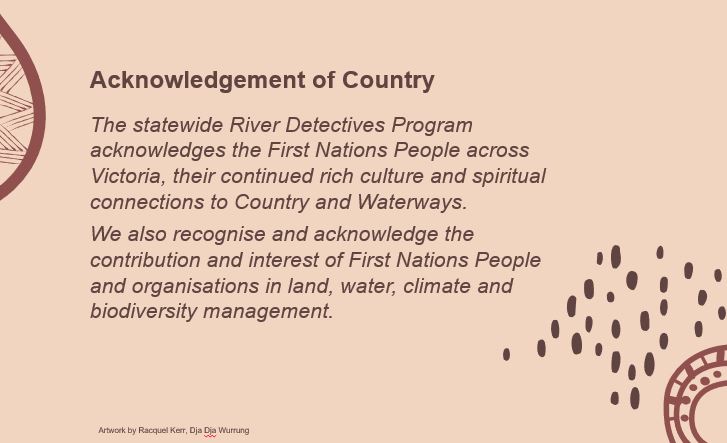Waterbugs
Explore how waterbugs survive in their hidden underwater world and what they can tell us about waterways
Waterbug lifecycle posters
These gorgeous lifecycle illustrations have been drawn by Kahlea Spiby, a 19yr old Wurundjeri Woi Wurrung woman living on Yorta Yorta Country. Kahlea has a background in Conservation and Ecosystem Management and was engaged by the River Detectives program after participating in a Youth Takeover program. Many waterbugs spend part of their life in the water then morph into an adult and become an important flying insect in the broader ecosystem. These posters showing the lifecycles of the Caddisfly, Damselfly, Dragonfly, Stonefly and Mosquito will help you explore these species more intimately.
|
Waterbug ID sheet with larvae/adult comparison
This resource is an ‘oldie but a goodie’ – useful because it shows a comparison between the nymph/larvae and adult forms of stonefly, mayfly, dragonfly, damselfly and caddisfly. Add it to your waterbug ID resources !
|
Of Dragons and Damsels articles
Wombat Forestcare have published two excellent articles over several editions showcasing dragonflies and damselflies with some great information and gorgeous images. Part 1 Dragonflies: March 2023 edition, pages 4-6 Part 2 Damselflies: June 2023 edition, pages 3-5
|
Tullaroop Catchment Project River Health Snapshot
Gauge the health of waterways in the Tullaroop Catchment project area using this compilation of water quality and water bug data collected by citizen-scientists.
|
Caring For The Campaspe Project River Health Snapshot 2021
Gauge the health of waterways in the Campaspe River using this compilation of water quality and water bug data collected by citizen-scientists.
|
Deans Marsh PS River Detectives Story
Deans Marsh PS is an active River Detectives school in the Corangamite CMA region embedding the program into the curriculum, into their school’s broader sustainability initiatives and connecting with their community. Watch the video to hear their highlights or read the full story here !
|
Bridgewater PS River Detectives Story
Bridgewater PS is a small school in the North Central CMA region achieving great things with their innovative Outdoor Classroom program where River Detectives takes a lead role. Watch the video to hear their inspiring highlights or read the full story here !
|
Bendigo Creek Citizen Science Project River Health Snapshots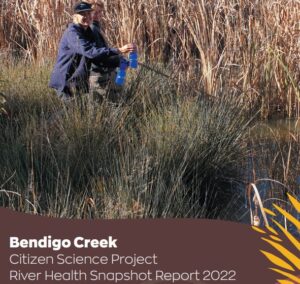
Gauge the health of the Bendigo Creek using this compilation of water quality and water bug data collected by citizen-scientists. To view and compare the 2021 report click here
|
Healthy Coliban Catchment Project River Health Snapshots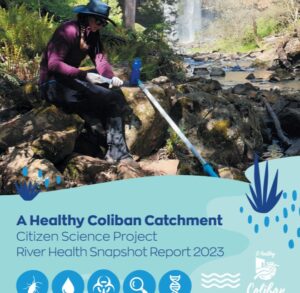
Gauge the health of waterways in the Healthy Coliban Catchment project area using this compilation of water quality and water bug data collected by citizen-scientists. You can also view and compare the 2022 or 2021 reports.
|
RiverScan Project River Health Snapshots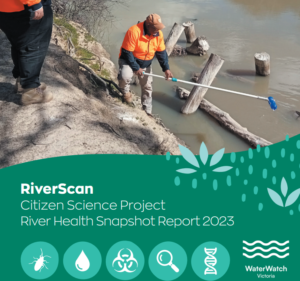
Gauge the health of waterways in the RiverScan project area using this compilation of water quality and water bug data collected by citizen-scientists. You can view and compare data in the 2021 and 2022 reports to track how things are changing.
|
Site Selection Checklist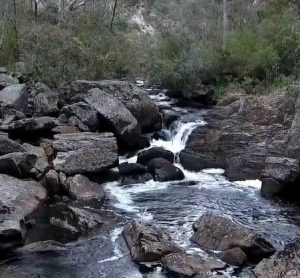
When choosing your site along a waterway or at a wetland for citizen-science activities (water quality monitoring, waterbug sampling and habitat surveys) there are many things to consider. Please refer to this checklist to assist you.
|
Build Me A River video
John Gooderham is an aquatic and macroinvertebrate ecologist with a knack for sharing his enthusiasm for waterbugs. This video highlights the importance of in-stream and riparian zone habitat to healthy bug populations, takes us underwater into the secret world of waterbugs and provides incredible close-up video of waterbugs that you are unlikely to see elsewhere (including time lapse footage of a caddisfly emerging from it’s larvae form).
|
River Detectives Program School Plan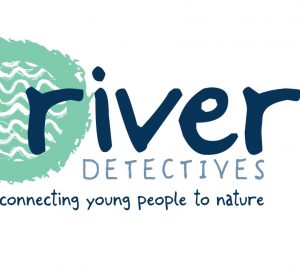
Use this School Plan to start a conversation with colleagues delivering the River Detectives program in your setting. This is a great template to use at the start of the year with lots of useful questions to promote thinking and space to document the approach you plan to take. There is also a useful template for sharing your River Detectives data and experience with others at the end of a term/year.
|
An introduction to identifying waterbugs with the Waterbug App
This hour-long video was recorded in 2020 for a Melbourne Water webinar series. John Gooderham is a lead expert and creator of the National Waterbug Blitz and the knowledge he shares in this webinar could be very useful for upper secondary students or teachers wishing to improve their identification skills and expertise with the Waterbug App.
|
Waterbug Discovery video
Join Deirdre and Kristen from Corangamite CMA for a great introduction to waterbugs in the Corangamite region. Get to know your regional River Detective staff, how to conduct a sampling session and the creatures you might find. For lower primary students, pause the video to read the text slides aloud. The Now and Then resource referred to is also found on the River Detectives website.
|
Waterbugs and water quality video
This 5 minute video from the Envirotube youtube channel explains how waterbugs are important indicators of water quality and habitat diversity and how changes in waterway health can impact them.
|
Introducing waterbugs video
This short 3 minute video by Priya from Melbourne Water is a fabulous tool to introduce waterbugs to your students; what they are, how they live, their wonderful adaptions, why they are so important to the aquatic ecosystem and how they can help us assess water quality and habitat diversity.
|
Advanced identification key (using Agreed Level Taxonomy)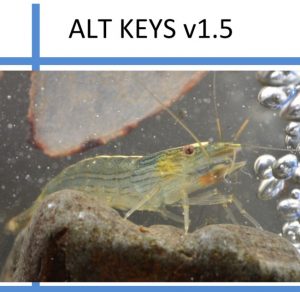
This more advanced key can be used with secondary students to identify waterbugs using a more detailed and scientific process. It is an alternative to some of the other simpler id charts, keys and digital options found in the Help Me Test -Waterbugs area of the website.
|
Make your own window sill pond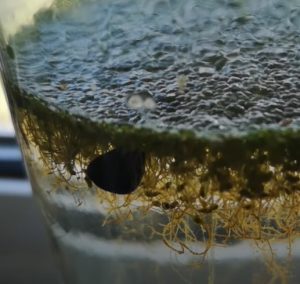
This series of videos takes you on a journey watching the development of a window sill pond over three weeks. Take a look then give it a go with your students ! See how the pond evolves during Week 1, Week 2 and Week 3.
|
How to take great waterbug photos with your device
This video by waterbug guru John Gooderham of The Waterbug Company is full of tips and tricks to take great photos of macroinvertebrates with an iphone when using The Waterbug App for identification. Designed so that photos can be uploaded as part of the National Waterbug Blitz program, this video is just as relevant for River Detectives to study waterbugs and record findings digitally.
|
How beetles breathe under water video
A great video from the Deep Look youtube channel analysing the adaptions beetles have developed to survive and thrive in their aquatic environments. Students will love this peek into the amazing world of water beetles. Check out Deep Look on youtube for other fascinating videos about the lives of terrestrial bugs.
|
Water Striders up close video
A great video from the Deep Look youtube channel analysing the various ways that water striders have evolved to become expert hunters of their aquatic prey. Students will love this peek into the amazing world of water striders. Check out Deep Look on youtube for other fascinating videos about the lives of terrestrial bugs.
|
Water Spider v Water Strider video
A great video from the Monster Bug Wars youtube channel showcasing the unique adaptions of water striders and how they would match up in a battle against a water spider.
|
Resourcing your macroinvertebrate sampling kit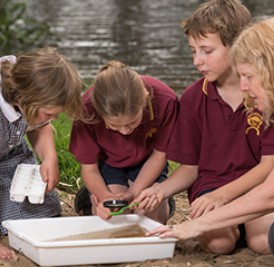
Autumn and/or Spring are great times to sample with students. Sampling equipment can be borrowed from your Regional River Detectives Coordinator. Contact them to book it ahead of time. Ideally it’s wonderful to sample several times a year and across different seasons so students can practise their skills regularly and observe patterns/changes. Having your own sampling equipment at school ready to go means that you’re more likely to grab opportunities to conduct macro sampling without the hassle of borrowing equipment. Most equipment is readily available but specialised equipment such as a sampling net and picking trays can be purchased at The Waterbug Shop or Westlab (a great use of grant funding/sponsorship if you have a supportive local Landcare group or business)
|
Now and Then waterbug guide
This booklet was produced quite some time ago by Corangamite CMA but remains a fantastic resource with waterbug profiles including fantastic photos showing the scale of bugs compared to a five cent piece, life cycle sketches, did you know facts and sketches/descriptions of the six main types of waterbug mouthparts (useful graphics for student research projects). Information and graphics from this booklet have also been used to produce our Waterbug Fact Sheets.
|
Waterbug Data Sheet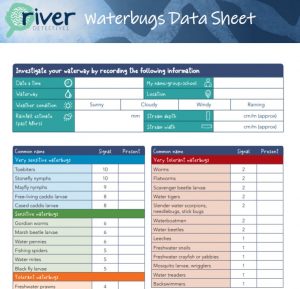
Use this data sheet on site or at school to record your waterbug data after sampling. You can enter your waterbug data online at the ‘Let’s Test and Record’ tab of this website.
|
Waterbug fact sheets
Comprehensive fact sheets on a variety of bugs in each of the sensitivity categories including photos and labelled sketches with information on size, appearance, habitat, diet, movement, predators, life cycles and other interesting facts.
|
River Detectives Field Manual
This is a copy of the Field Manual you receive a version of in your water quality test kit. If you lose your hard copy you can access it here. Be aware that this is the full manual – some pages may be irrelevant to you depending on the equipment you have and the region you are in.
|
The Waterbug Shop
The Waterbug Shop was established as a better way for people to access equipment and resources for the sampling and identification of waterbugs.
|
Urban Stormwater poster
This poster is a fantastic resource to use demonstrate the impact of litter that can flow into a waterway with urban stormwater. It highlights the often unknown fact that only 10% of waterway litter is visible from the surface and a disturbing 90% will be hidden under the water. The Water Bug pictures could be placed on the poster to create discussion about how they (and other fauna) would be impacted by stormwater pollution and how this would impact on the entire food chain.
|
Wonderful Waterbugs
You may like to use this activity sheet from Melbourne Water when completing a sampling activity – includes a space to sketch the bugs you find and profiles on five common waterbugs.
|
Waterbug Face Facebook page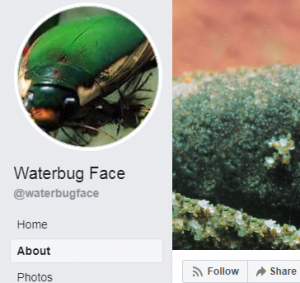
This page is run by freshwater ecologists dedicated to assisting with waterbug ID from photos. Send your image in for help with identification and check out posts for very cool photos and videos of waterbugs in action.
|
The Waterbug App
The Waterbug app helps you identify waterbugs from Australia. Work through the scientific key on your device to answer questions that help you identify your waterbug, or whizz through speedbug and see if you recognize it. A fantastic portable, paper-free resource for waterbug identification.
|
In-Stream Habitat Poster
This poster is a fantastic resource to use during macroinvertebrate sampling sessions to demonstrate the five habitats that exist within a waterway; on the surface (surface zone), in open water (deep zone), amongst vegetation (reed zone), on rocks/logs/gravel (substrate zone) and amid the sediment (benthic zone). Use the links below to each quarter of the poster to print as A3, laminate and join for a class-size poster you can keep. Top left, top right, bottom left, bottom right Use the information on the reverse of the Waterbug Cards to have students place them in their correct habitat on the poster.
|
Exploring Surface Water Tension and Water Striders
This unit comprising of 6 lesson plans for upper primary will develop student’s scientific inquiry skills while learning about water tension and how a water strider utilises water tension to survive. For more surface tension science experiments check out this video.
|
Mosquito Madness
The unit provides 5 lesson plans to allow students to understand the life cycle of mosquitoes, specifically their morphogenesis and the way the organism changes appearance throughout its lifetime. Other key topics include mosquito habitats, ecology and environmental impacts on the mosquito population.
|
Waterbugs Higher Level Key
Closely observe the features of macroinvertebrates and use the questions on this key to work your way to an identification using the Agreed Level Taxonomy (ALT) method. For more info on ALT method, go to: thewaterbug.net
|
Waterbug ID chartUse this poster as a field guide to identify waterbugs in your sample, understand the in-stream habitats they prefer and use the sensitivity scores to rate the health of your waterway. It can be laminated (or similar) and used with white board markers for longevity.
|
Waterbug colouring sheetsUse Melbourne Water’s beautiful colouring images of waterbugs for education / relaxation. A mix of waterbugs Diving Beetle Dragonfly Larvae Sensitive waterbugs Freshwater Snail Mayfly life cycles Wetland waterbugs
|
How to run a waterbug session video
In this video Priya from Melbourne Water takes you through the key steps of how to sample and study macroinvertebrates (waterbugs). Don’t forget to contact your local Catchment Management Authority to arrange a loan of macroinvertebrate equipment to run a sampling activity with your students or set up your school’s own kit.
|
Water Bug Outlines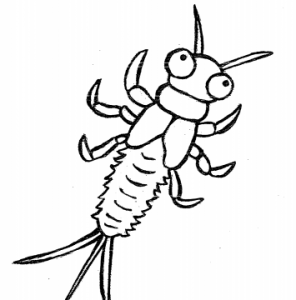
Use these bug outlines for colouring, collage, making posters/dioramas, classifying, making a food chain, as a starting point for research, etc.
|
How to make a bug dial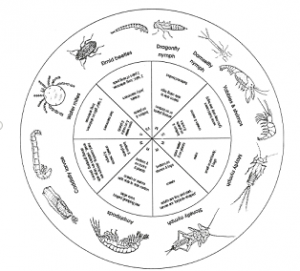
Make your own bug dial and learn more about the bugs you’ve identified. Find out about the way they move, their sensitivity to pollutants, where they live and special features.
|
Waterbug Cards
Use these cards to;
|
Water Bug Flip Charts
An interactive resource about the most common macroinvertebrates. Set on a 5 cent piece, images help students understand the size and scale of waterbugs and when your mouse hovers on an image it flips to reveal a fact file of the bug’s name, size, physical features and interesting adaptions.
|

